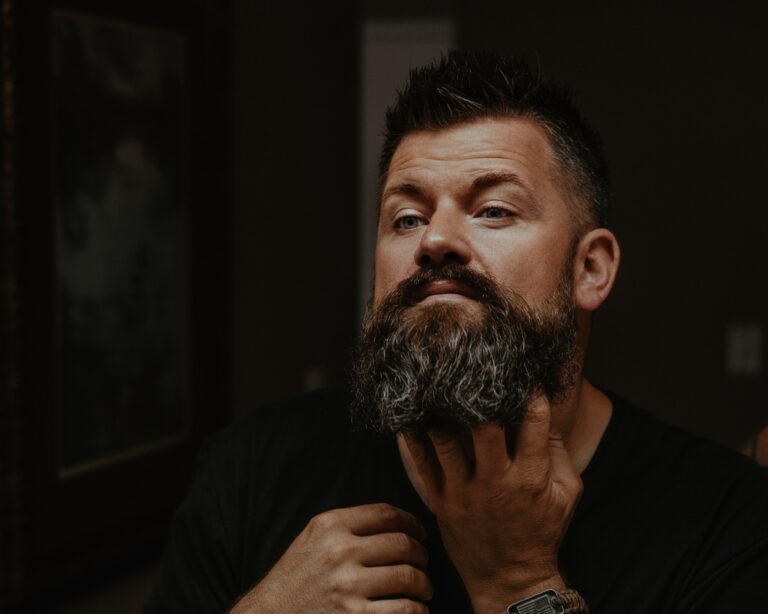The Art of Face Mapping: Understanding Your Skin’s Unique Needs

When it comes to men’s facial hair grooming, there’s more to it than just growing a beard or maintaining a clean-shaven look. Your skin plays a crucial role in how your facial hair looks and feels, and understanding its unique needs is the key to achieving a well-groomed and healthy beard or clean-shaven face. This is where the art of face mapping comes in.
What is Face Mapping?
Face mapping, also known as skin mapping, is an ancient practice that originated in traditional Chinese medicine and Ayurveda. It involves dividing the face into different zones and correlating them with various organs and systems in the body. By examining specific areas of your face, you can gain insights into your overall health and tailor your grooming routine accordingly.
Benefits of Facial Mapping for Men’s Grooming
Face mapping can be particularly beneficial for men with facial hair. The presence of facial hair can sometimes make it challenging to determine the underlying skin conditions or concerns accurately. However, with face mapping, men can gain a deeper understanding of their skin’s needs and address any potential issues more effectively.
By examining different areas of the face, such as the beard, mustache, and sideburns, face mapping allows men to identify specific skincare concerns, like dryness, irritation, or ingrown hairs. This knowledge can then be utilized to tailor a skincare routine that caters to the unique needs of their skin, enhancing their overall grooming experience.
Now, let’s delve into the art of face mapping and discover how it can help you understand your skin’s unique needs.

1. The Forehead Zone
The forehead is often associated with the digestive system and bladder. If you experience breakouts or oily skin in this area, it may indicate issues with your digestion or hydration levels. Incorporating a balanced diet, drinking plenty of water, and using non-comedogenic products – products that don’t clog or block your pores – can help maintain a healthy forehead.
2. The Nose Zone
The nose is connected to the heart and circulatory system. Blackheads, redness, or dryness on the nose could be signs of poor blood circulation or high blood pressure. Regular exercise, a diet rich in antioxidants, and proper skincare can support the health of your nose.
3. The Cheek Zone
The cheeks are linked to the respiratory system and lungs. Redness, dryness, or sensitivity in this area may signal allergies, asthma, or smoking-related issues. Avoiding triggers, protecting your skin from environmental pollutants, and practicing deep breathing exercises can benefit your cheek zone.
4. The Chin and Jawline Zone
The chin and jawline are connected to hormonal fluctuations and the reproductive system. Acne, cysts, or ingrown hairs in this area can be related to hormonal imbalances or stress levels. Maintaining a healthy lifestyle, managing stress, and using gentle skincare products can help keep this zone in check. Look for products that are soothing, non-irritating, and mild in formulation.
5. The Neck Zone
The neck is associated with the thyroid gland and lymphatic system. Dryness, itchiness, or inflammation in this area may indicate thyroid issues or a compromised immune system. Paying attention to your diet, protecting your neck from sun exposure, and incorporating neck exercises can support the health of this zone.

Extra Tips for Face Mapping
Face mapping allows you to identify the root causes of specific skin concerns and address them effectively. By understanding which areas of your face may require extra care, you can tailor your grooming routine to target those specific needs. Here are some tips to get you started:
- Cleanse your face twice a day using a gentle cleanser suitable for your skin type.
- Exfoliate regularly to remove dead skin cells and unclog pores.
- Moisturize daily to keep your skin hydrated and nourished.
- Use quality sunscreen with SPF to protect your skin from harmful UV rays.
- Seek professional advice if you have persistent or severe skin issues.
Remember, everyone’s skin is unique, and what works for one person may not work for another. It’s essential to listen to your skin, observe its response to different products or lifestyle changes, and adjust your routine accordingly.
The Bottom Line
In conclusion, the art of face mapping offers valuable insights into your skin’s unique needs. By understanding the correlations between different facial zones and internal health, you can achieve optimal results in men’s facial hair grooming. So, take the time to analyze your face, adapt your grooming routine, and embark on a journey towards a well-groomed and healthy beard or clean-shaven face.






